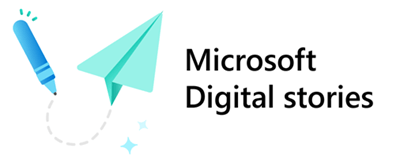
As organizations grow and transform their IT infrastructures, maintaining consistency in patch management across various environments and cloud architectures has become a priority here at Microsoft and at companies elsewhere.
A recent shift from Microsoft Monitoring Agent (MMA) to Microsoft Azure Arc and Microsoft Azure Update Manager (AUM) offers us and others a unified solution for both on-premises and cloud resources. This transition is improving our patch orchestration while offering our IT leaders more robust control of our diverse systems internally here in Microsoft Digital, the company’s IT organization.
Moving to Azure Arc

Using MMA and shifting to AUM with Microsoft Azure Arc integration requires using Azure Arc as a bridge, enabling management of both on-premises and cloud-based resources under a single source.
Historically, the MMA allowed for “dual homing,” where IT teams could connect machines to multiple Microsoft Azure subscriptions with ease. This flexibility streamlined patch management and reporting across different environments.
This feature is particularly useful for us and other large organizations with multiple Azure environments, says Cory Granata, a senior site reliability engineer on the Microsoft Digital Security and Compliance team in Microsoft Digital. However, the newer Azure Arc-based AUM only allows machines to report into one subscription and resource group at a time.
This limitation required some coaching for teams accustomed to MMA’s dual-homing capabilities.
“It wasn’t really an issue or a challenge—just coaching and getting other teams in the mindset that this is how the product was developed,” Granata says.
Azure Arc’s streamlined approach offers an efficient path for IT teams like ours looking to centralize patch management, especially for diverse infrastructures that include cloud and on-premises assets.
Centralizing patch orchestration
One of the standout advantages of Azure Update Manager with Azure Arc is its ability to support patch orchestration across a wide range of environments.
“You have the ability to patch on-premises, off-premises, Azure IaaS, and other resources,” Granata says. “This flexibility extends beyond Azure to cover machines hosted on other platforms, and on-premises Hyper-V servers.”
For organizations with complex infrastructures like ours, this unified approach simplifies operations, reducing the need for multiple tools and platforms to handle updates. Whether managing physical servers in data centers, virtual machines across different cloud providers, or edge computing devices, Azure Arc ensures that patch management is consistent and reliable.
These changes have been very helpful internally here at Microsoft.
“The AUM is our one-stop solution for patching all these different inventories of devices, regardless of where they reside—on-premises, in the cloud, or in hybrid environments,” says Humberto Arias, a senior product manager in Microsoft Digital.
This multi-cloud and edge computing capability offers IT leaders here and elsewhere the flexibility to scale their patch management efforts without being tied to a specific platform.
Migration challenges
While the transition to Azure Arc and AUM has brought us significant benefits, there have been some challenges, particularly around managing expectations for dual-homing capabilities.
The key thing we had to work through was that Azure Arc could only connect to one Azure subscription and resource group at a time. This required additional training for us—we needed to shift our mindset and adopt new workflows. However, after our people understood this limitation, the migration process was smooth.
“Fortunately, it only phones into one subscription and one resource group,” Granata says. “So, wherever it phones in is where all of your patch orchestration logs and everything must go as well, and it can’t connect into another subscription. This centralized approach simplifies reporting and patch management, but it did require some initial adjustments for teams accustomed to multi-subscription environments.”
Through coaching and training, our teams were able to adapt, and the long-term benefits of a more streamlined system quickly became apparent.
Azure Arc and AUM benefits
Following our migration, our teams began to realize the true benefits of using Azure Arc and AUM for their patch orchestration needs.
“The neat thing about using AUM with patch management and patch orchestration is the centralized control it provides,” Granata says.
For IT teams managing both internal IT assets and lab environments, the ability to oversee patching across a diverse range of systems from one location was a game-changer.
Additionally, the new system provided enhanced reporting and visibility.
While MMA offered flexibility in terms of connecting to multiple subscriptions, Azure Arc’s centralized model makes it easier to manage logs, reports, and patch statuses from a single dashboard.
“We’ve really enjoyed the increased visibility and ease of use that this has given us,” Arias says. “This is particularly valuable for large organizations like ours with distributed environments, where maintaining visibility across multiple systems can be a challenge.”
The integration with Azure Arc also extends your platform’s reach to non-Azure environments, including AWS and other cloud providers. This means that organizations running multi-cloud or hybrid cloud strategies can benefit from a unified patch management system, regardless of where their machines are hosted.
For IT leaders here and elsewhere, these improvements represent a significant step forward in our operational efficiency and security. By centralizing patch management under Azure Arc and AUM, we can ensure that our systems are up-to-date, secure, and compliant, without the need for multiple tools or platforms. We hope sharing our story helps you do the same at your company.

Here are some tips for getting started at your company:
- Azure Arc allows for a centralized management approach, providing IT leaders with a comprehensive view of their infrastructure.
- Azure Update Manager offers improved patch orchestration and update management, leveraging the latest Azure technologies.
- While the transition to Azure Arc brings numerous benefits, it also necessitates adjustments, particularly for teams accustomed to dual homing with the Microsoft Monitoring Agent.
- With some light coaching, teams can easily learn the new system’s capabilities and limitations.

Discover more about Azure Arc from the Microsoft Azure product group, including About Azure Arc, Azure Arc for servers, and Azure’s Cloud Adoption Framework.






